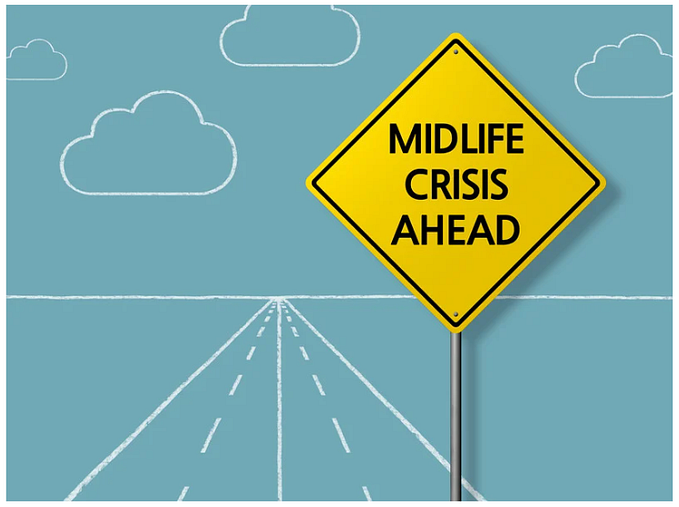The 3-layer CX cake: orbits, journeys, and blueprints
Corporations today are all almost entirely digital. We are now in a phase where we all living in a world with a “digital atmosphere”. Product companies rely on services to enhance their offerings and ensure customer satisfaction and growth. Service companies may or may not have physical touchpoints, but all have multiple digital access channels including web, mobile and apps. In today’s digital atmosphere companies are diversifying their products and services offerings into one or more integrated product/service portfolios. Most companies products and services could be modeled as a large solar systems with orbiting products and services that traverse around the core company “sun” in their respective customer journeys. True to the analogy specific products and services gravitate closer than others. There are specific clusters of products and services that group together.
To fully understand, evolve and improve product and services in todays world you need a dedicated CX effort. The CX effort needs to capture the interactions, complexities, and nuances of the interaction of product and services across your interaction channels. Gaining a complete understanding of your company requires different diagrams, tools and “lenses” that focus on different layers of abstraction and detail in the product and service ecosystem. One way and one method is not enough. You need at least 3 — the 3 layer CX cake. Each level of of the “cake” is vital to full product and service understanding for any company with a product/service portfolio.

LAYER 3 Orbits — Highest level Product and Service Interactions the ecosystem
LAYER 2 Journey Maps — Product/Service level mappings.
LAYER 1 Service blueprints — Detailed mappings within a product.
Orbit level analysis requires a perspective focussed on product and service interactions. In most companies this is challenging as the research will cross internal “business units”. There is little formal company organization on the “glue” between these units. Yet from the consumer point of view its the same company, same brand and expectations for continuity, seamless transitions, and frictionless experiences are high. Orbit analysis should monitor internet “chatter” and proactively conduct research at the “orbit” level to monitor and gain insight into a companies product portfolio — the health, affinities, momentum. At the highest level orbit modeling and analysis will identify product and service connections. Which are operating well which are lagging and which are leaking to competitors. Orbit analysis is also strategic, it allows you to discover opportunities for new products and services that should be in your orbit from the consumer perspective.

The orbit model also allows you to be proactive, once you understand common journey paths to the different product and service “planets” in your company orbit you can encourage adoption of adjacencies. Discovered product groupings could also suggest new products or services that would “fit” and enhance current offerings.
Layer 2: Customer Journey the “middle” of the cake
Customer journey mapping at the product and service level provides insights into customer perceptions pain points across the product life cycle. It also is vital for service understanding in how customers use services and how easily they can upgrade, downgrade, or pause the service. In today’s highly competitive market the company with the best overall experience across the product life cycle with thrive. Attempts to “hold hostage” or “penalize” service changes can lead to customer backlash and lost revenue as customers flee to competitors. T-Mobile is perhaps the best example of where a company saw opportunity to capitalize on a “punitive catch and capture” journey that the other telcos had evolved.

The results have been staggering. Mr. Legere T-Mobile CEO, has the fastest-growing and best performing wireless company today with a laser focus on eliminating customer frustrations, pain-points and perceived “rip offs” along the customer journey. “The strategy: Get rid of typical plans and prices. Embrace customer desires and eliminate their pain points. That meant no more two-year contracts, no more roaming fees, no more incomprehensible charges at the bottom of every bill. Most significantly, T-Mobile was far ahead of AT&T and Verizon in 2016 in scrapping monthly data limits and the annoying overage charges they generated — forcing its bigger rivals to follow suit.” [Fortune: Inside T-Mobile’s Big Brash Comeback]
Clearly active research and attention to customer journey is vital to success. The Cx team must conduct research to create, refine and share customer journey insights with key stakeholders on a regular cadence. Its also good practice to create a CX portal where cross functional teams, beyond primary stakeholders, can review the state of the customer journey for the product or service they support or develop.
Layer 1: Service Blueprints — bottom of the cake
The most detailed view of your customer journey is the service blueprint maps. These are detailed maps that show how customers interact with “front line” digital forms, applications, and customer service whether in person over the phone or in chat. The service blue print also captures service segments times and “handoffs”. This level of detail can be used to reveal suboptimal flows from resource time perspectives. It can also point to areas that will lead to poor customer experience, excessive “hand offs” to various systems and/or service representatives or very long sub-service times. The map can also be used to check against customer research and customer feedback to ensure its accurate and to see how well it can predict service “hot spots”. Blueprints can also pinpoint specific areas to focus on refactoring for increased consumer satisfaction and delight.

Customer Experience and satisfaction has never been more important to company success, and growth. Leading companies all have parity with software tooling, and technology architectures in most areas. The biggest differentiator now is customer knowledge an insights. This requires a cake — a 3 layer cake to be specific.









